When working on any driveway or walkway projects, to ensure the long-lasting effect between the pavers, a polymeric sand is often used. This material might be more expensive than others, but it provides a way more durable effect which is why it is so popular today.
However, when using polymeric sand, you need to be aware of one important nuance that comes with it: this compound tends to harden very quickly once it gets in direct contact either with water or with moisture! So in order to avoid it, you should remove polymeric sand haze really fast even before your project is finished!
This is why today we are going to tell you how to remove excess polymeric sand from pavers quickly and safely so that the pavers remain unharmed.
You will learn more about cleaning polymeric sand off pavers while it is still dry, and also, we will teach you what you should do in case the sand has already hardened.
In addition, we will provide you with a few handy tips on precaution measures that should be taken after you clean polymeric sand off your pavers.
And of course, we will answer the most frequent questions from you at the very end of the article! Stay with us and read on, there is a lot of useful information for you today!
How to Remove Polymeric Sand Haze From Pavers?
If you are doing a driveway project right now that uses polymeric sand, you surely wonder how to remove polymeric sand from concrete pavers after the work is done. Since polymeric sand is not the same as ordinary sand, dealing with it requires certain knowledge and skill.
Since this type of compound is probably one of the best choices when it comes to sand types for joints, polymeric sand is frequently used.
This is why it is important to be aware of how to clean it off correctly so that your pavers remain undamaged and the sand haze thoroughly removed.
So how to get polymeric sand off pavers? Well, we would recommend you remove the polymeric sand from the paver surface right after finishing your patio or any other surface that you are working on right now.
The haze that shows up on the flooring usually occurs simply because there was some leftover material.
The tricky thing about this material is that polymeric sand contains 85 – 90 percent quartz and crystalline silica, which is what gives the sand its outstanding binding power. Respectively, when you wet this sand, water or moisture activates the polymers, which hardens the various components, effectively locking the pavers in place.
However, this is also the reason why removing polymeric sand from pavers might be difficult if any liquid/water or moisture gets into it! If it hardens, it will be way more complicated for you to get it off the pavers without damaging or scratching them!
So if you need to clean the excess polymeric sand off the pavers, we recommend you do it in a few simple steps that we have described below:
- To start the cleaning process, avoid any contact with water or moisture before cleaning. It will be easier to remove the polymeric sand from the surface while it is completely dry.
- Begin with sweeping the surface with a broom with soft bristles. We recommend you make use of a soft bristled broom instead of the one with harsh bristles so that you don’t scratch or damage the surface of the pavers.
- Repeat step two as many times as necessary to remove as much polymeric sand as you can. Sweeping the surface will also help to deposit the material into paver joints, making the most of every inch.
- Finally, when you are done with sweeping, use a leaf blower to blow off any leftover.
The only thing that we would like to warn you about at this stage is the proper use of your leaf blower! Be very careful when using it to remove the excess sand haze from the pavers since the air flow may blow it out even from between them! So level the appliance to make it less powerful.
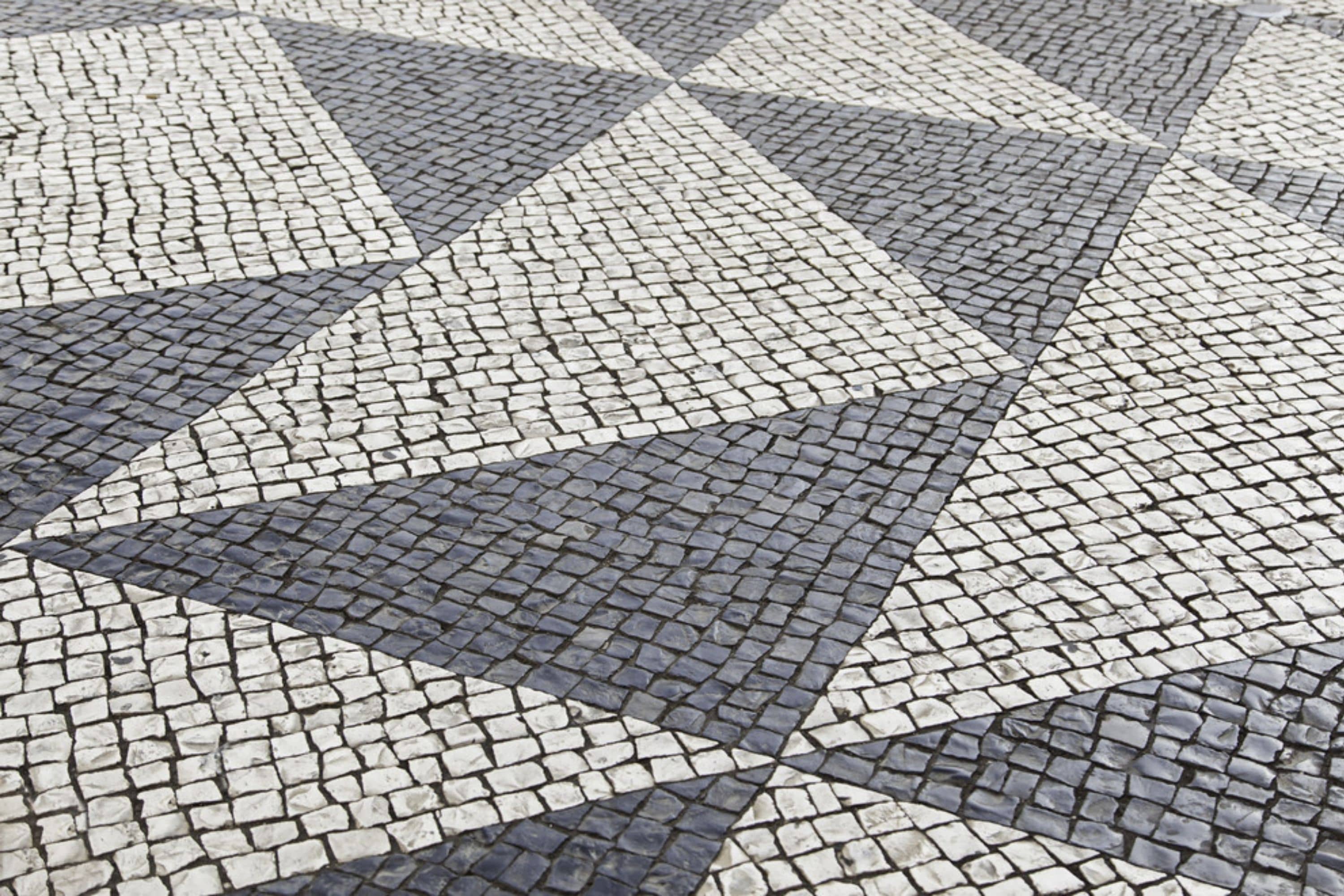
How to Remove Haze On Pavers From Polymeric Sand If It Has Already Hardened?
It is great if you managed to remove polymeric sand from your pavers in time before you finished your driveway or walkway project and before the compound hardened! But what if the scenario is somewhat different? What if the polymeric sand did harden before you swept it away?
Well, that means that you will obviously have to deal with a more complicated task!
Complicated, but not impossible. Of course, it is sad if there is any polymeric sand left on the pavers’ surface since it will harden if wet. As a result, you will be left with a haze on top of the stones that is difficult to remove.
But, the good news is that you can still clean the stone flooring surface after that! In some situations, when the haze on the paver’s surface is thin enough, you are likely to be able to wash it off with hose water. Repeat the process if necessary.
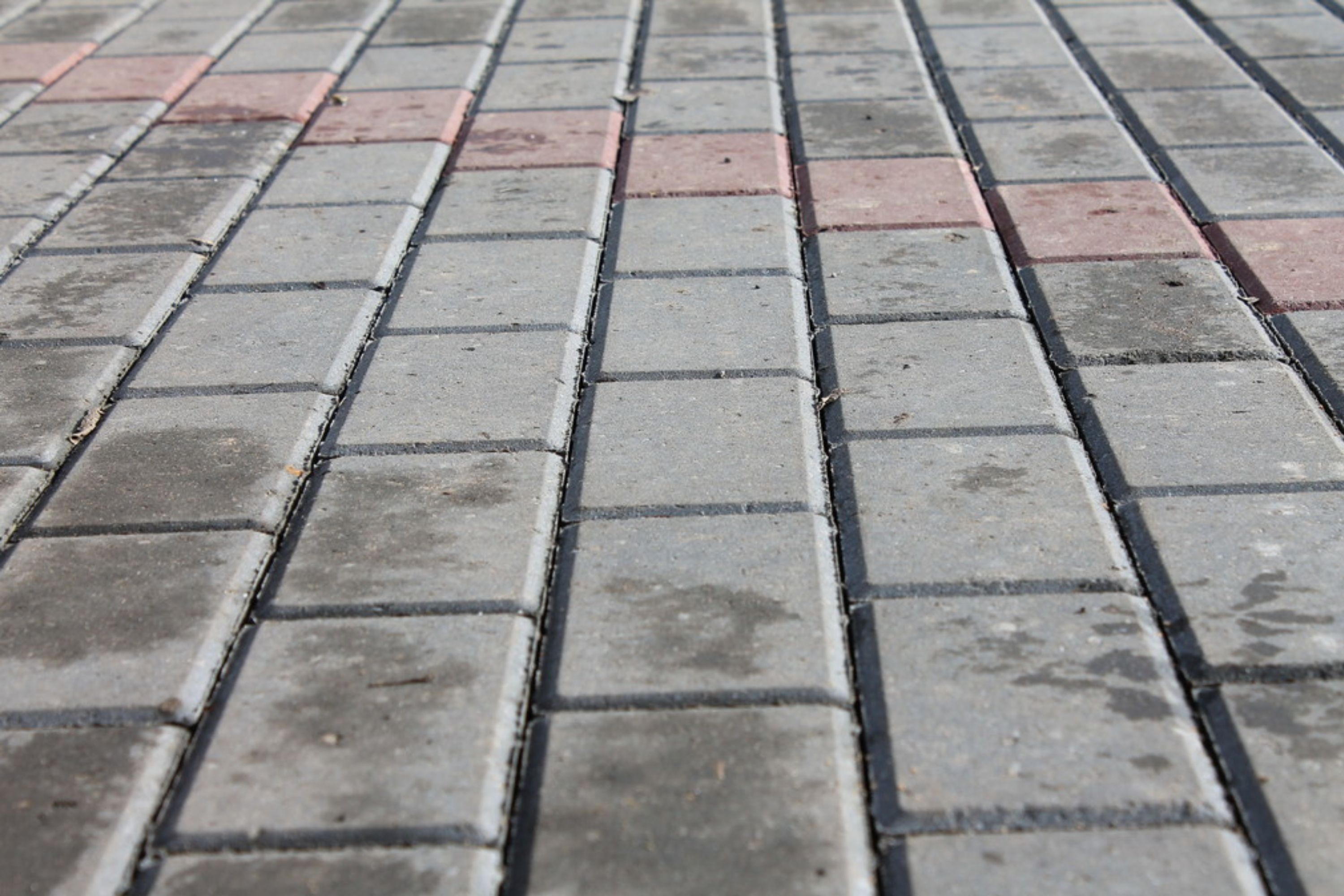
However, especially in cases if the polymeric sand layer is thick, it forms rough clumps over the surface. Probably, you will not be able to wash it off just with your garden hose.
Is it possible to remove the polymeric sand stuck on pavers using a pressure wash then? In fact, yes, you can use a pressure washer! However, make use of it strictly if necessary.
If it is not possible to remove the excessive polymeric sand that has already hardened even after a few days of washing the surface, then you can bring on another “weapon”!
We would also like to remind you of one essential thing that you should keep in mind when using pressure wash. It is important not to remove the polymeric sand from between the joints!
Thus, the most suitable pressure for cleaning pavers is the medium range, approximately from 1600 to 2000 PSI.
For even better results, you can make use of a hot water pressure washer at 180 degrees Fahrenheit. See, the heat will reactivate the polymers in the product and allow you to strip away the sand.
If it is a smaller paver area, even boiling water can be used for removing polymeric sand haze!
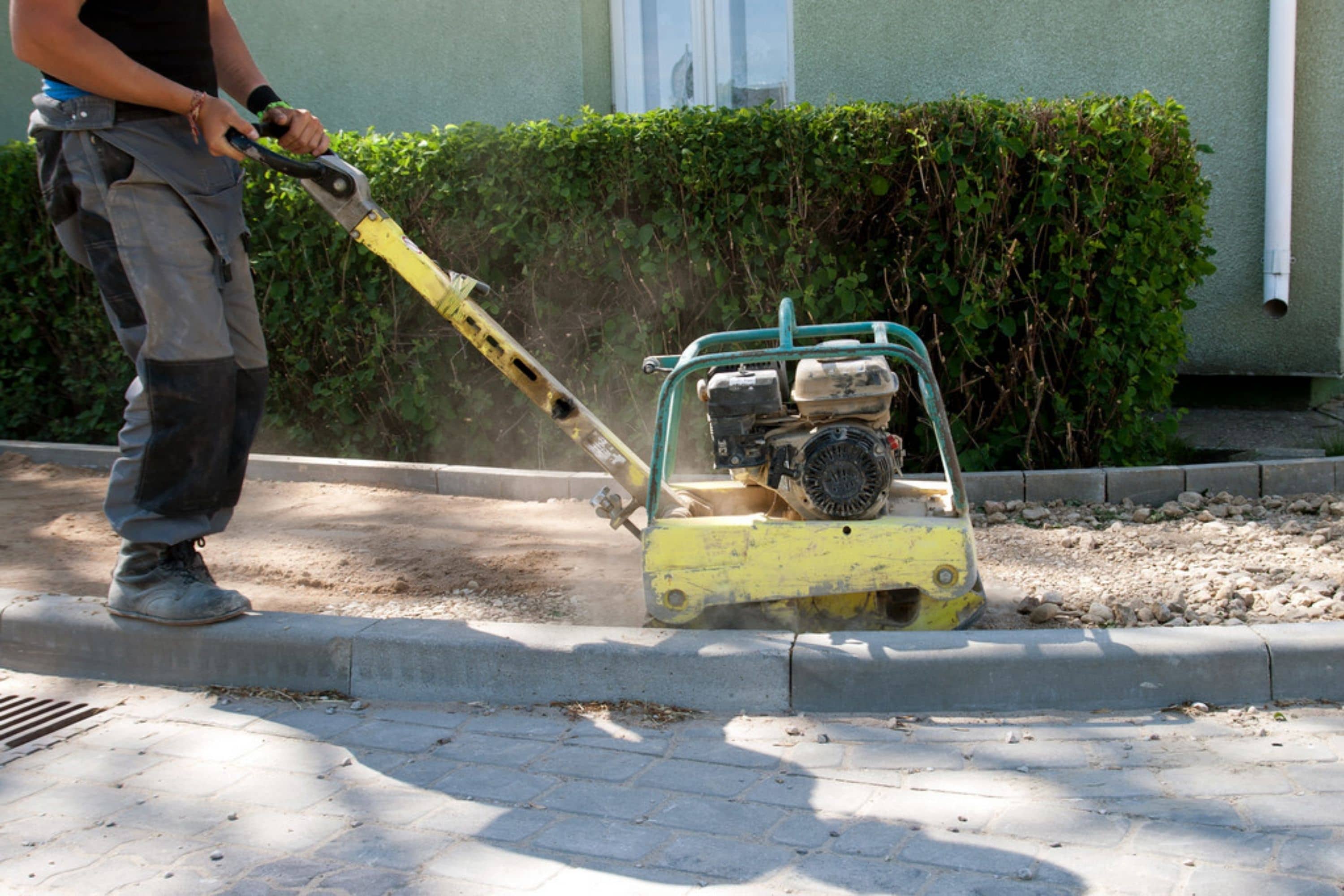
Related: How to Clean Concrete Basement Floor?
What Shall You Do After You Remove Polymeric Sand From Pavers? Tips And Life Hacks
After a successful polymeric sand removal, we would recommend you take a few necessary precautions:
- If you accidentally removed the polymeric sand from the pavers’ joints, you will have to fill that space again. But avoid putting the material into the gaps if the surface is wet or damp! Keep in mind the weather forecast: do not do it if there is rain coming in the next few days!
- After filling in the joints with polymeric sand, we recommend you make use of the cleaning precautions that have listed at the beginning of the article.
- Wet the polymeric sand using your garden hose in order to activate it. Like that, it will form the alloy that will keep pavers in place.
There is, however, one more necessary step that must be taken after you finish the whole process. We are talking about applying the sealer over the area.
When you apply this substance, it will help to fix the polymeric sand in the joints between the pavers.
Like this, the material will get hard for the rain to wash it off in the future, for example, which will ensure the long lifespan of your patio or a driveway.
Related: How Long Does Driveway Paint Last?
Polymeric Sand Problems You Might Face
Applying polymeric sand may seem to be very easy: you just need to fill the gaps between the pavers with this dry sand-like compound and wait until it settles.
However, at this very stage of the application process, you may often face different complications that are good to know about in advance!
Like this, when you are armed with all the necessary information, you will be able to figure out what issue you are dealing with should anything happen. And of course, it will be easier for you to figure out what you should do in each particular case.

What If Polymeric Sand Is Not Hardening?
This is the number one problem that takes place during the installation of polymeric sand! It just does not set! What this looks like is the sand not hardening. A simple test in this case is to stick a screwdriver into it. If it is possible to penetrate the sand with the tool, then there is a problem.
Typically, this issue occurs because there was rain shortly after the installation, and moisture and water caused the sand not to set. As a variant, the sand might stay watered for too long, or there is not proper drainage in the base.
If you figure out that the problem is caused by the base, then there is a bigger problem that you have to deal with!
The solution for this issue would be to remove the polymeric sand first, then install a jointing sand, and then make use of a joint stabilizer on the sand as an alternative to the polymeric sand.
If you believe that polymeric sand refuses to harden because the sand was too saturated or there was rainfall before the compound managed to set, then you can scrape out the sand and try reinstalling the polymeric sand.
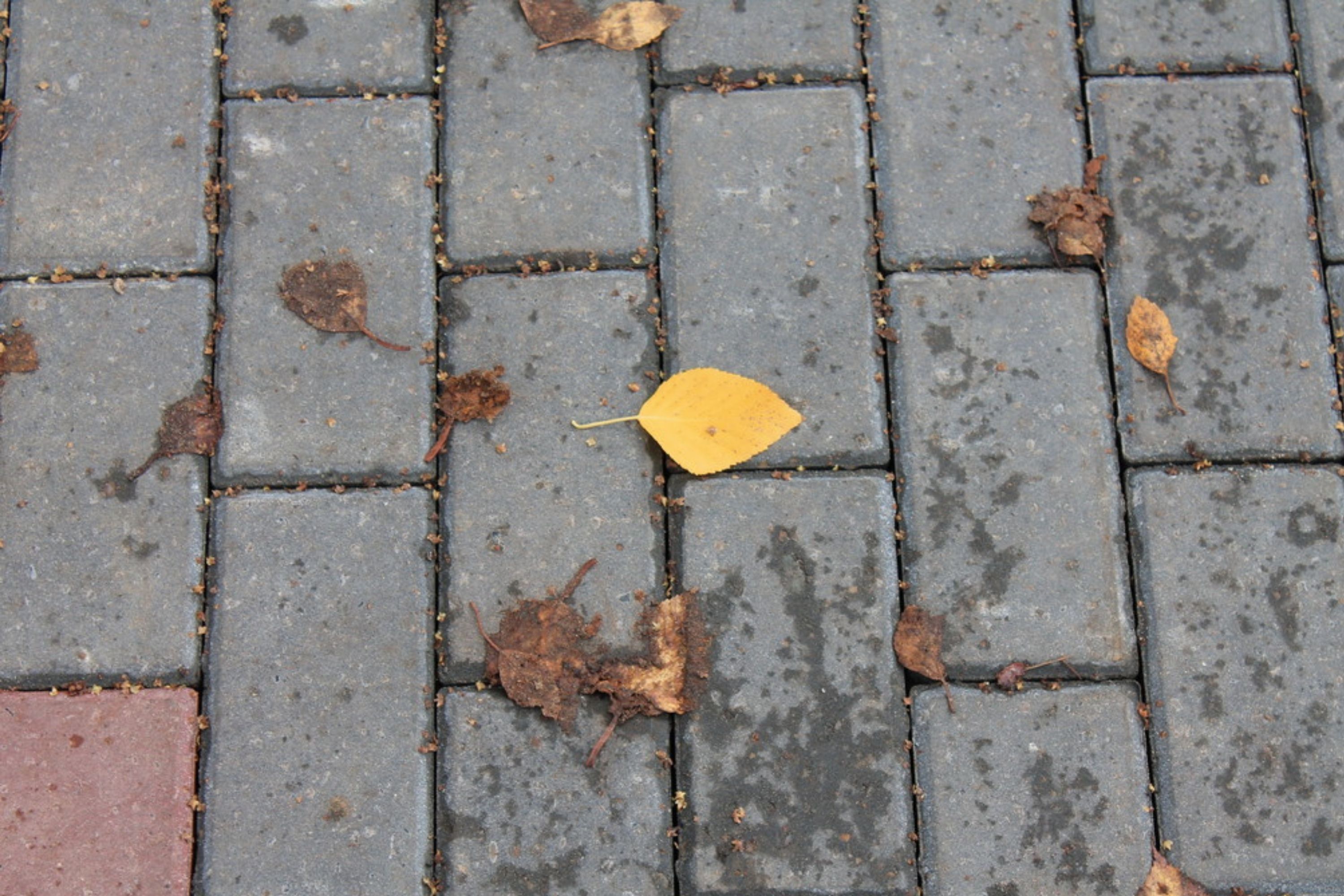
What Shall You Do If Polymeric Sand Crusts?
If there is a crust forming on the surface of the sand, this means that the sand was filled too high or it was not watered enough. If the problem is in the fact that the sand was filled too high in the initial installation, the compound will continuously be worn and eroded away.
In case the sand was not watered enough, then the surface was able to solidify but everything below it would remain loose, which will cause the top layer to crust and peel off.
The solution to this problem is simple yet not satisfying: you will have to remove the sand and replace it.
Like this, you are now informed about all the steps that must be taken if you need to clean polymeric sand off pavers after the driveway or a walkway project is finished (or better even before it is finished!).

We have provided you with short yet helpful instructions on what to do to clean the leftover sand off and do it carefully so that your pavers are not damaged and the sand is not blown away from between them!
Also, we have shared a few most common problems with you that one may face when applying polymeric sand.
And since you also have the ways of solving them, we are sure that next time you are into any renovation projects in your household, these issues will not prevent you from finishing them in time.
[wp-faq-schema title=”Frequently Asked Questions”]
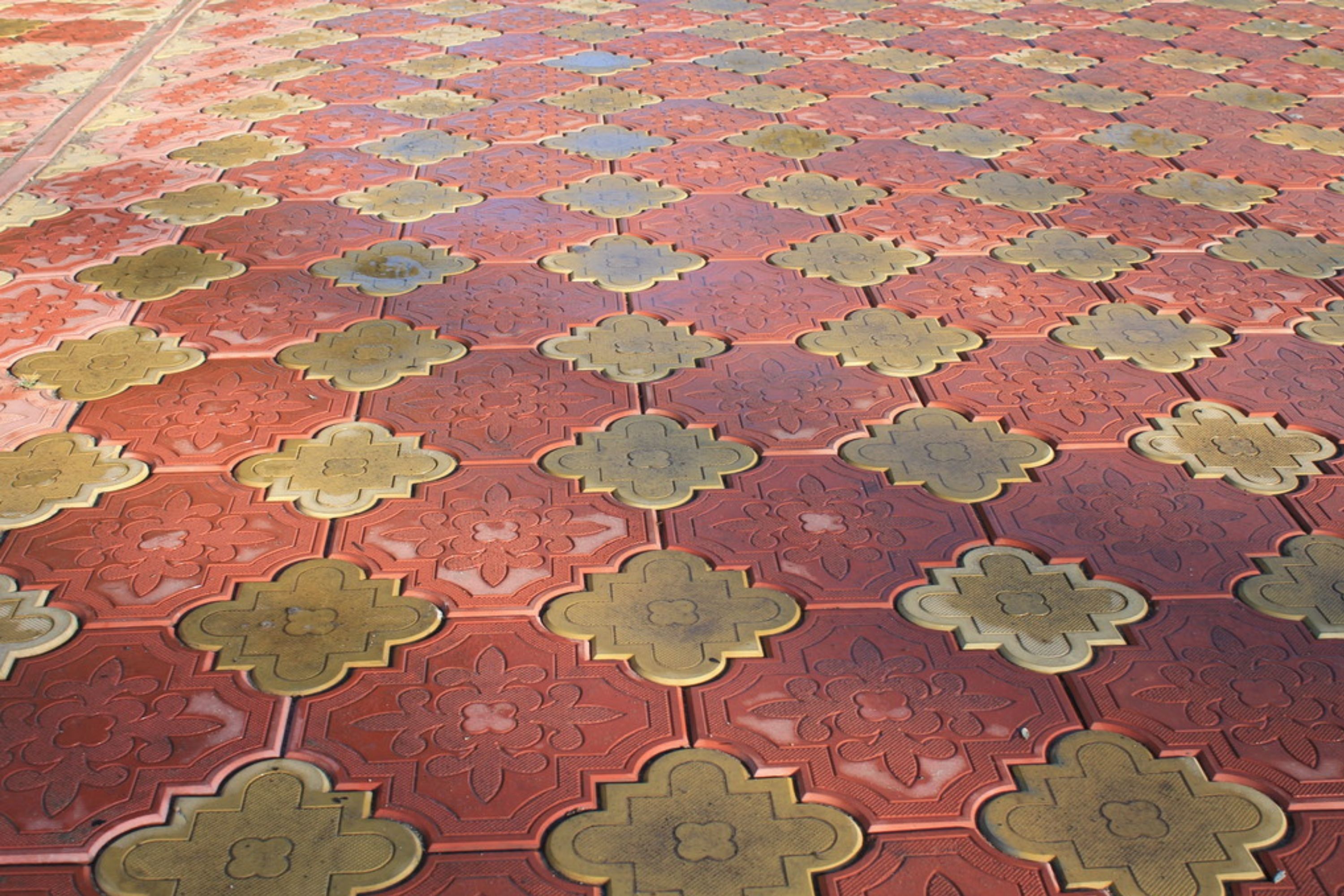
I heard that it’s possible to remove polymeric sand haze with vinegar. Is it true? Did anyone try that? How did it work (if it did)?
Well, I can only tell you that, if this sand haze has transpired on the surface, it must be cleaned with an acid-based cleaner. Sometimes vinegar can indeed be used unless the sand haze is severe. But I personally never used this method.
We have just applied poly sand today, but it’s going to rain tomorrow and I’m afraid it will be washed out! What can happen? Could anyone advise me on what to do? Thanks a lot!
Well, if the sand has not set yet, rain can indeed make it end up all over the top of the pavers! But that’s in case of a hard rain. I’d say you should water your poly sand properly so that it sets.